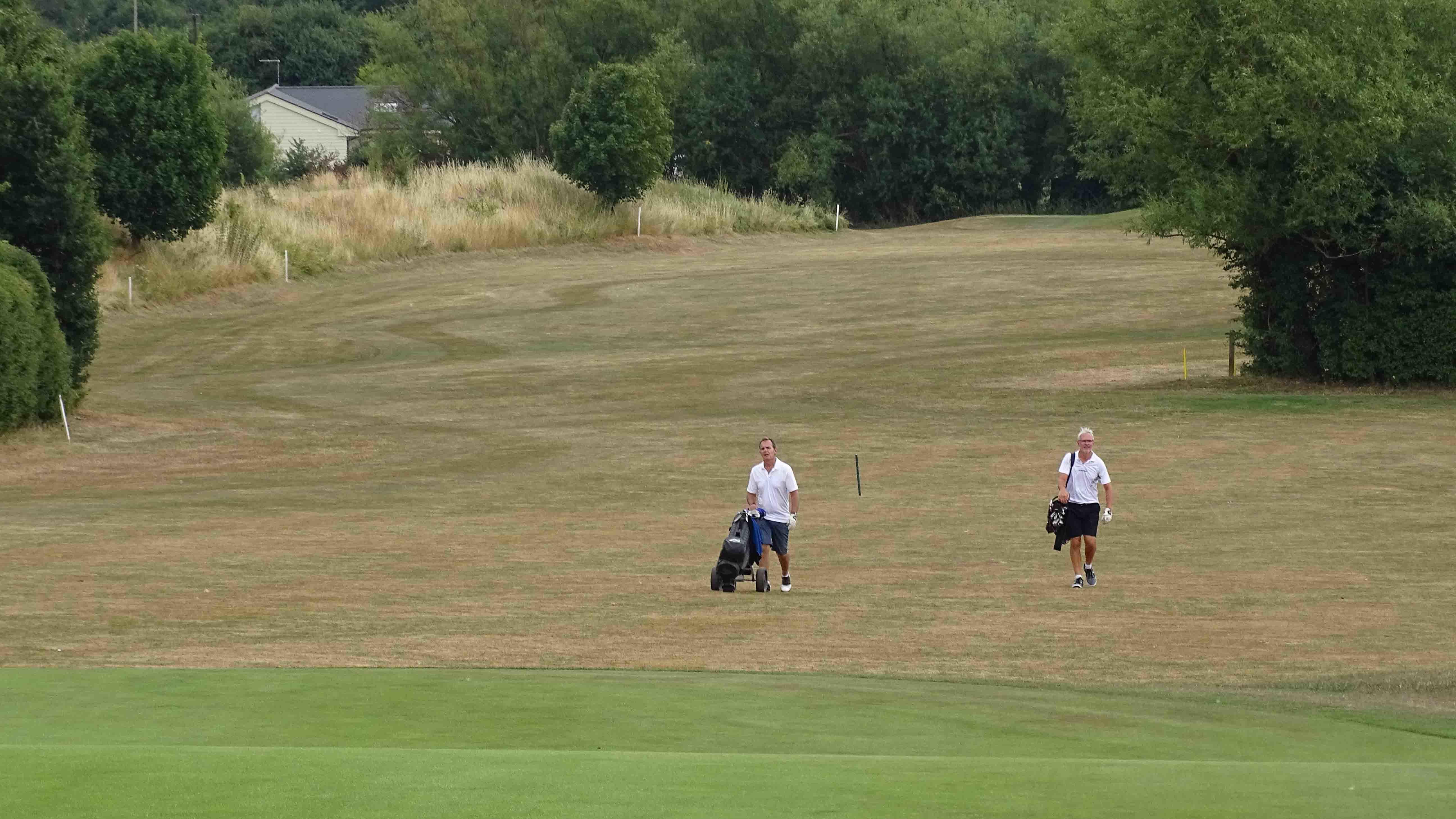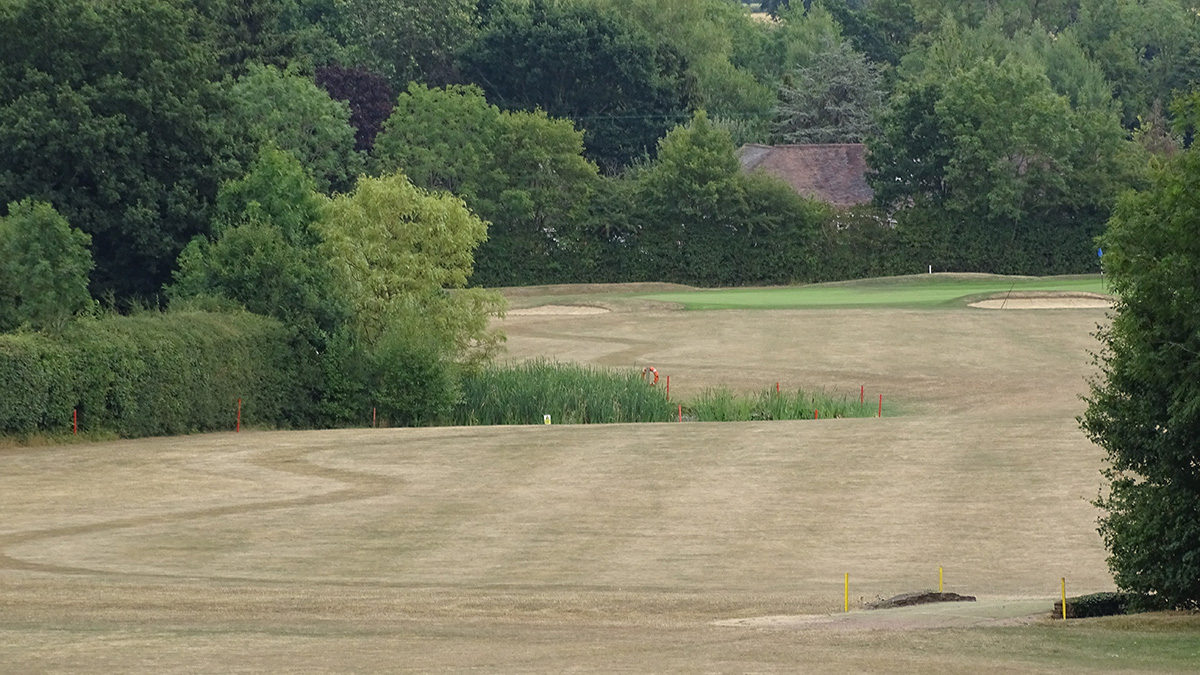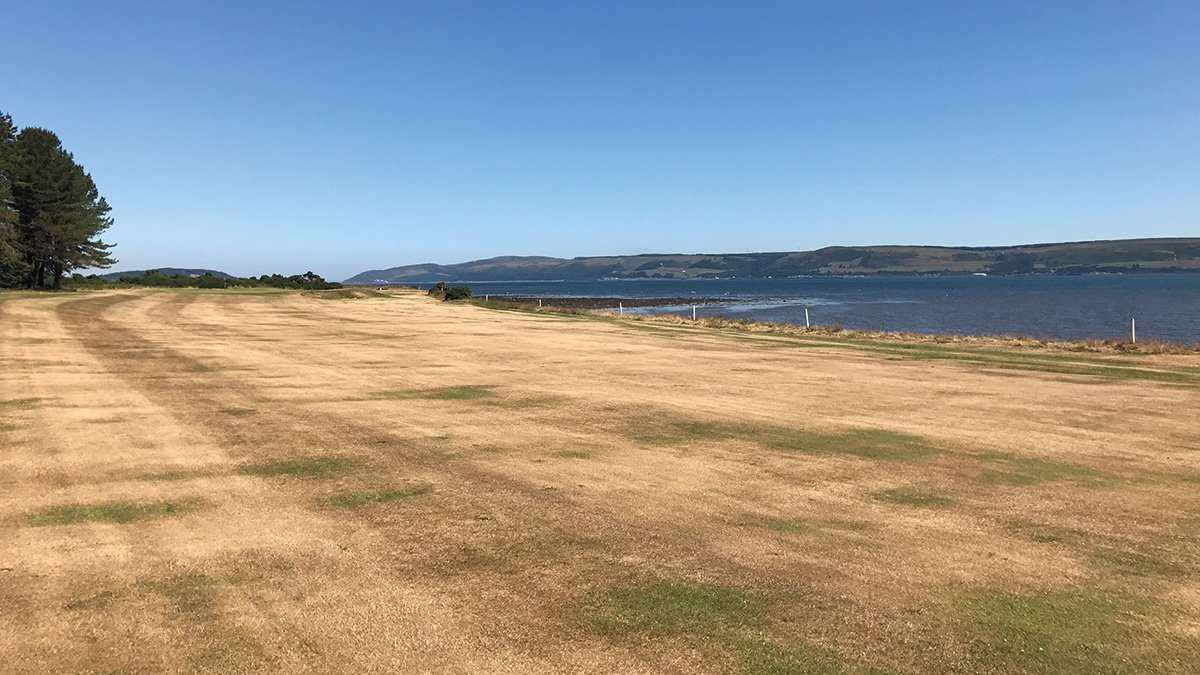- Homepage
- News and Features
- Why drought conditions are nothing to worry about
Why drought conditions are nothing to worry about
We've just experienced the hottest summer since 1976 and it is anticipated that long periods of drought will occur more often in future. But what does the heat do to our courses?
This article was first published in the autumn 2018 edition of Your Course magazine.

If you like your course to be as deep a shade of green as possible then this summer sent you into torment. It’s not unusual to see a links course a little browned off when the mercury rises but the high temperatures in the middle of the year scorched courses whether they were inland or by the sea.
For lovers of parklands, used to lush fairways and tangly rough, the sight of balls bouncing down barren grass with nothing to stop them was probably something of a shock. But what’s actually happening to our courses when temperatures get so high? What happens when it finally rains? How does the turf recover?
“Grass is quite resilient,” said Gaudet Luce course manager Andy Laing. “It’s not going to die. It will turn brown, wilt and become dormant, which to an untrained eye could be mistaken for being dead. But it’s not. It’s just dormant and using its energy to protect its root systems so that it can recover once the weather breaks.

“Courses actually play quite well in these conditions. Links courses tend to have this look during most summers but for an inland parkland course like us, it’s something to which our members aren’t particularly used.”
Andy admitted he has never experienced such severe temperatures in his career, and reckoned that at one point in the summer he was using 50 per cent more water than the previous year. With mains water becoming ever more expensive to utilise, it’s a balancing act between watching the amounts extracted from the pipes – to keep the bills down – while ensuring the greens stay healthy.
“Although we have long-term plans to look to other water sources we are currently using mains water for irrigation purposes and this presented a new problem for us to try and overcome this year,” he added. “While our irrigation system wasn’t bad, the mains water supply in our area was considerably down on pressure due to demand.
“That meant it was difficult for us to refill our storage tanks sufficiently during the day, in time for the start of our automatic irrigation cycle overnight. We had to be very conservative in what we used, and continually adjust our programme to target the driest areas on greens and tees.
“Our automatic cycle is always kept to a minimum, which enabled us to top up by hand-watering the hot spots during the day. It is not normal for us to experience water supply problems – this was the first time we had. Water was just not in plentiful supply this year.”
As you might expect, the greens are key. While grass may be hardy, as Andy has explained, the way our putting surfaces need to be maintained means they would only last a few days if irrigation systems failed under the pressure of such extreme conditions.

And even with those technologies at the disposal of a greenkeeping team, the sheer scale of the temperatures and the many weeks with which they persisted still exposed weaknesses - even for greens and tees that are automatically watered every night.
“There are areas that begin to dry off, such as those that get a lot of sand splash from bunkers and any high spots, but it also highlights any disparity in the irrigation system’s coverage. Any faulty sprinklers are soon highlighted in these conditions and these areas have to be watered by hand until repair work can be undertaken. We certainly had areas on and around our greens that weren’t getting as much water as they perhaps should. That’s something that only really highlights itself in these extreme temperatures and it becomes a juggling act then between system repairs and improvements, hand watering and water conservation.”
When the rain finally fell the fescue fairways at Gaudet Luce began to recover quickly with minimal grass loss. With that the case, there is no appetite to look at fairway irrigation. That’s partly because of the soil, with the Worcestershire-based layout being a heavy clay-based course that takes a long time to dry out. But there is also the cost. Andy estimated the club would need to shell out anywhere from £750,000 to more than £1 million for the kind of systems that keep fairways routinely green on courses on the continent.
So as forecasters predict we are all likely to be sweltering in the summer far more often in the future - as the effects of climate change really start to bite - golfers are probably going to have to accept that their courses may look a little different in the hottest months from now on.
“There is the perception that green is good,” Andy said. “I don’t necessarily agree with that, but for a parkland golf course, that’s kind of what it relies on. For a course where people are used to seeing it striped up, lush and green, it is probably a bit of a shock to the system. When they turn into the golf club and look down the drive across the course they think ‘what on earth has happened? It’s brown. The course is dead’. It’s dormant and dry but with the first bit of rainfall it will recover quite quickly.”
Author

